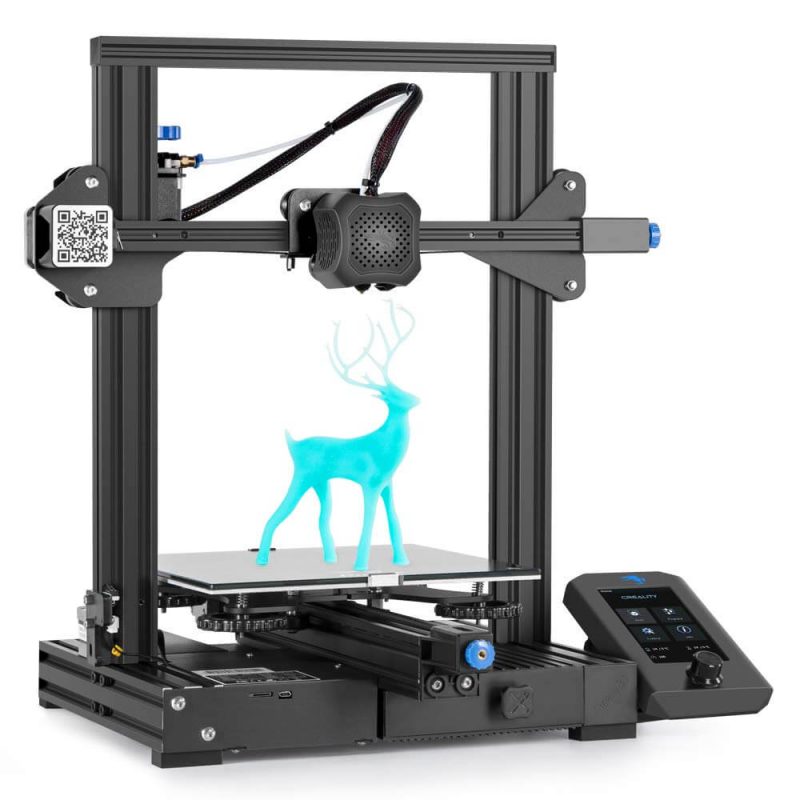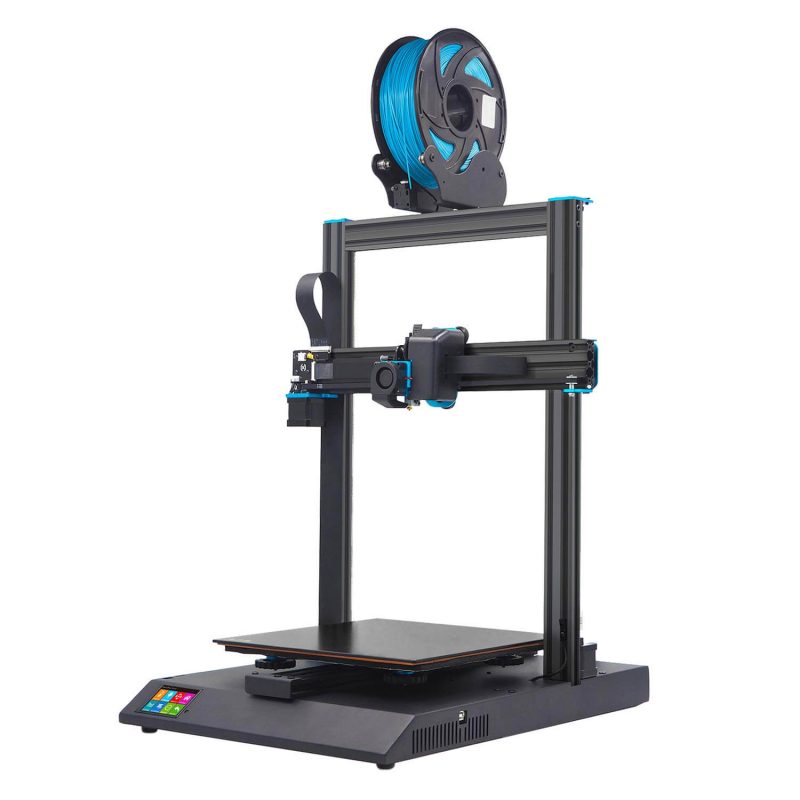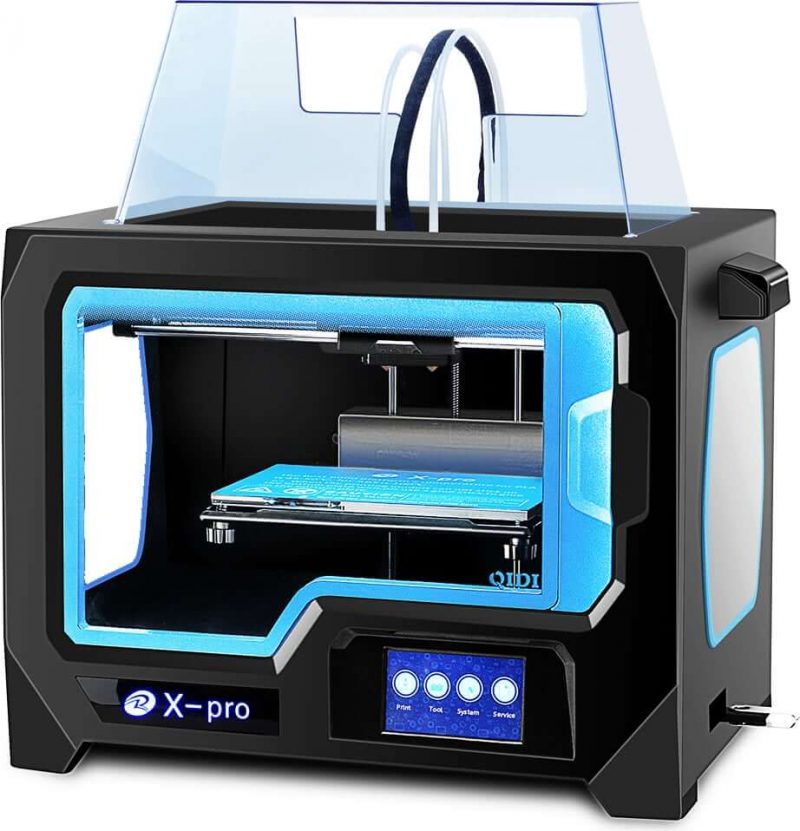While you are out there in the market or maybe in the research stage that goes on for buying a 3D printer you are obviously reading more and more 3D printer reviews.
And all you want to do while reading 3D printer reviews is, have a comparison between one 3D printer versus the other. In this article, we are going to do exactly the same thing.
We are going to compare more than one 3D printer that is actually in a single budget range.
And we are going to see different aspects on the basis of which their companies have marketed them and discuss it out.
So, for the article, we have taken a few choices of 3D printers that cost under $1000.
And our pick is Creality Ender 3 V2, Artillery Sidewinder X1, and Qidi tech X Pro. We’ll go straight to our first picks.
3D Printer review of Creality Ender 3 V2

Creality’s Ender 3 V2 has now, for a long time been one of the experts’ favorites when it comes to affordable 3D printers.
And they do not say that the 3D printer is perfect. In fact, they acknowledge the fact that the printer is far from being perfect.
But the fact that the printer can be purchased at close to $200, and it offers a decent print volume, and is easy to assemble and improve, and can produce high-quality prints, isn’t really too much?
Features and specifications of this printer
What the makers of this printer have eliminated is the boxy metal enclosures of previous Ender 3 models. On this version of the printer, you will find tidy new molded plastic panels across the printer.
Yes, these are at the detriment of being, obviously, plasticky, but then that is something that distances the Ender 3 V2 from a semblance of tinker ability of its predecessors.
Barring the fact that the Ender 3 V2 is every bit as modifiable as its predecessors – there’s just more plastic to unscrew first.
The other feature of the printer is the inclusion of a drawer. Which is useful for storing flush-cutters, hex keys, storing cookies for print set-up coffee dunking, microSD cards, and all manner of other tidbits.
There is also now a screen, a new kind of user interface that is offered by the machine that can be detached by sliding it upwards.
You can release the two metal pins from a plastic mount that is bolted to the frame. And for some reason, the users who have experienced it, don’t find any use for this.
Although one of the reasons attributed to this face is the time of testing and seeing how short the display’s cable is, they come across this conclusion.
This 3D printer is based on FDM technology and offers a build volume of 220 mm * 220 mm * 250 mm.
The filament diameter used for this printer is 1.75 mm and the printer also accepts 3D party filaments and is compatible with printing materials like PLA, ABS, PETG, and TPU.
The printer features a tempered glass print bed. It also offers a quieter printing than other printers of the same price, it has a color touch screen interface.
The way in which the company has marketed it on their website
Landing on the webpage where the makers write about their printer, there are four images on the left, with a short description on the right.
The claims made on the right start by calling the printer suitable for a business start-up.
Seeing the text,” join us and become one of the Creality 3D printer distributors or resellers overseas,” just reclaims the company’s intentions. Scrolling down you have specifications, features, video, and review.
In the review section three people named Josh, Jeff and Rosscothep do the 3D printer review of this machine, first in a line than in some sentences.
The last one is looking forward to it, so clearly he hasn’t used it.
The second one who has used the printer claims it to be a great first 3D printer. Meaning that it’s his first-ever 3D printer in use.
The third one says in one line that it’s a great printer according to the price. And you are open to interpretations based on that.
10 Things You Need to Know Before Buying A 3D Printer
How To Choose The Best 3D Printing Machine
Top Websites From Which You Can Buy 3D Printers
3D Printer Review of Artillery Sidewinder X1

Since the original was released back in 2018, the manufacturing company of this 3D printer has rowed through numerous iterations for addressing mainly negative user feedback.
After hearing such feedback from the ground the manufacturer has been quick to pick up on this feedback, which has resulted in most of the recent iterations. Sidewinder X1 V4 is a rock-solid printer that’s worth it.
So, do check out the iteration of which the 3D printer review is on any website where you are looking for this printer’s review. This one is off the fourth iteration.
Features and Specifications of this printer
The Artillery Sidewinder X1 is one of the many printers that have a sleek design.
Because these printers were made after a certain brand that was first in producing a printer of the same design, the manufacturers of these printers are said to have copied the design.
However, the Sidewinder X1 is not a mere clone, neither from the installed tech nor from the overall appearance.
One of the main reasons this printer differentiates itself from its competitors is the use of ribbon cables. And to be quite frank, this elevates the X1 from a design perspective right up there to the top.
Unlike a great number of budget desktop printers and the fistfuls of spaghetti-like cabling they come with, the Artillery Sidewinder X1 deviates itself with neatly arranged large ribbon cables.
Another welcomed and also seldomly seen feature of this 3D printer is the use of hefty 20 x 60 mm extrusions for the bed rail.
Followed with this is the x-axis on the X1 which have a sturdy Y-axis rail is somewhat common nowadays, even on printers that require you to have more budget than this.
Still, the 60 x 20 mm extrusion on the X-axis is a rarity because most printers make do with a 40 x 20 mm at best.
The thing to absorb from this is that these notoriously need more rigidity on the X-axis due to the increased weight of the extruder. Print volume-wise, the Sidewinder X1 is slightly above average.
However, where the Sidewinder is pretty much uncontested by any of the other 3D printers, is its ability to get from naught to printing.
To quantify this, the Sidewinder’s heated bed leaves others in the dust. Heating from room temperature to 60°C in approximately 45 seconds. And, for the sake of completeness, the nozzle is in no way inferior.
The way in which the company has marketed it on their website
There is the 3D printer’s video on the left of the webpage and to the right, you have its naming and price.
There are more than ten photographs apart from the video that you have of this printer.
Sliding down you get to see the description and the review. The description contains one line of information about the printer’s features.
Sliding even more down you have a picture of this printer and the measurements in mm.
There are product details, every part of the printer is highlighted and named and their functions are named.
Scrolling even more down you have the packaging details that are used for this printer. When you click on the reviews you have no data.
There are mentions of stars that can be given to the printer, but clearly, there hasn’t been any use that’s made of this option or the website hasn’t uploaded the changes.
3D Printer Review of Qidi Tech X pro

Based in the Chinese province of Zhejiang, Qidi Technology produces fused deposition modeling (FDM) 3D printers dedicated to the hobbyist and semi-professional market.
The Qidi Tech X-Pro is one of the most affordable dual-extrusion models going.
This 3D printer is an update of the Qidi Tech I, which itself was based on the classic Makerbot Replicator.
Features and Specifications of this printer
The Qidi Tech X-Pro is accepting a 1.75 mm filament diameter that is fed directly into the drive extrusion system on the print head.
The responsibility of handing the Print’s cooling is given to the “air blow turbofan.” What it does is it, encircles the nozzles and, cooling from all four sides.
Speaking about the location of the fan, it needs to be mounted when setting up the printer, but tutorials will guide you through the process.
The 3D printer features an acrylic cover and additional panels that can be magnetically adhered to the top and sides of the metallic frame.
The side panels that allow you to see-through aren’t quite snap-fit but hold firmly enough to ensure a constant temperature in the build chamber.
This part is something that is needed for materials that need a constant temperature.
The X-Pro comes with a 6 mm “aviation-grade” aluminum heatable bed. This print bed is a removable, magnetic build plate that is very sophisticated.
Although it’s way more robust than the floppy magnetic bed of most machines that require more budget. The bed adhesion mostly works nicely.
The magnets of the printer are relatively strong and hold the print bed securely in place.
All of these are great for printing, but once you want to take the bed out, you’ll need to apply some force.
However, the sites that have been able to test this printer have had a trouble-free experience in the removal process.
All they recommend you essentially do is just bend the plate inward and outward for the print to pop off.
The way in which the company has marketed it on their website
When you land on the webpage of the printer on its manufacturer’s website, you have X-Pro written over the navigating chain that led you to the webpage.
Nothing, no picture, no written features, no video, just plain white background with these texts.
All of these makes you a little skeptical and think whether it is the real website of the manufacturer or not, you might even want to Google it again to know so.
But then you find out that yeah! This is in fact the website and all you have is nothing over here on the webpage.
Scrolling down you have four options, two to the right which you might want to click on when you want to buy the 3D printer from Amazon, and two to the right when you would want to contact the company. But that’s pretty much it.
The Conclusion
We are hoping that this new way of writing multiple 3D printer reviews in a single article has enabled you to compare those printers in a more efficient way than before.
Guessing the immense amount of research that really goes into purchasing any device, we know that you would be wanting to take notes of printers that strike you and compare them.
And this is an attempt at the new modern way of doing that.
We haven’t mentioned the price of 3D printers while writing this 3D printer review because we realize that is sort of a more stereotypical way of comparing 3D printers.
And you and everyone who is interested in 3D printing are really because of the technology side of it. And the offering that these devices give to you.
Rather than the fact that you do not only have to invest in money but the time and effort.
And seeing the claims that are made by these manufacturing companies, you might want to take the tour of the experiment and see how precise they are in stating things out.
So we have interestingly added the claims that the manufacturer makes about printers on their own website, which is one more factor for you to judge them out.
Hope this complete comparing 3D printer review was helpful in your journey of market research before purchasing a 3D printer.








